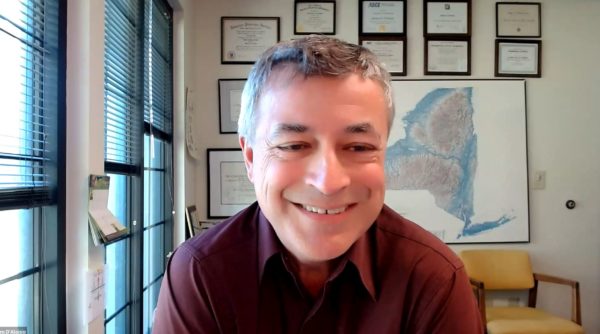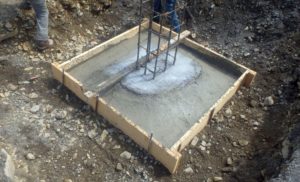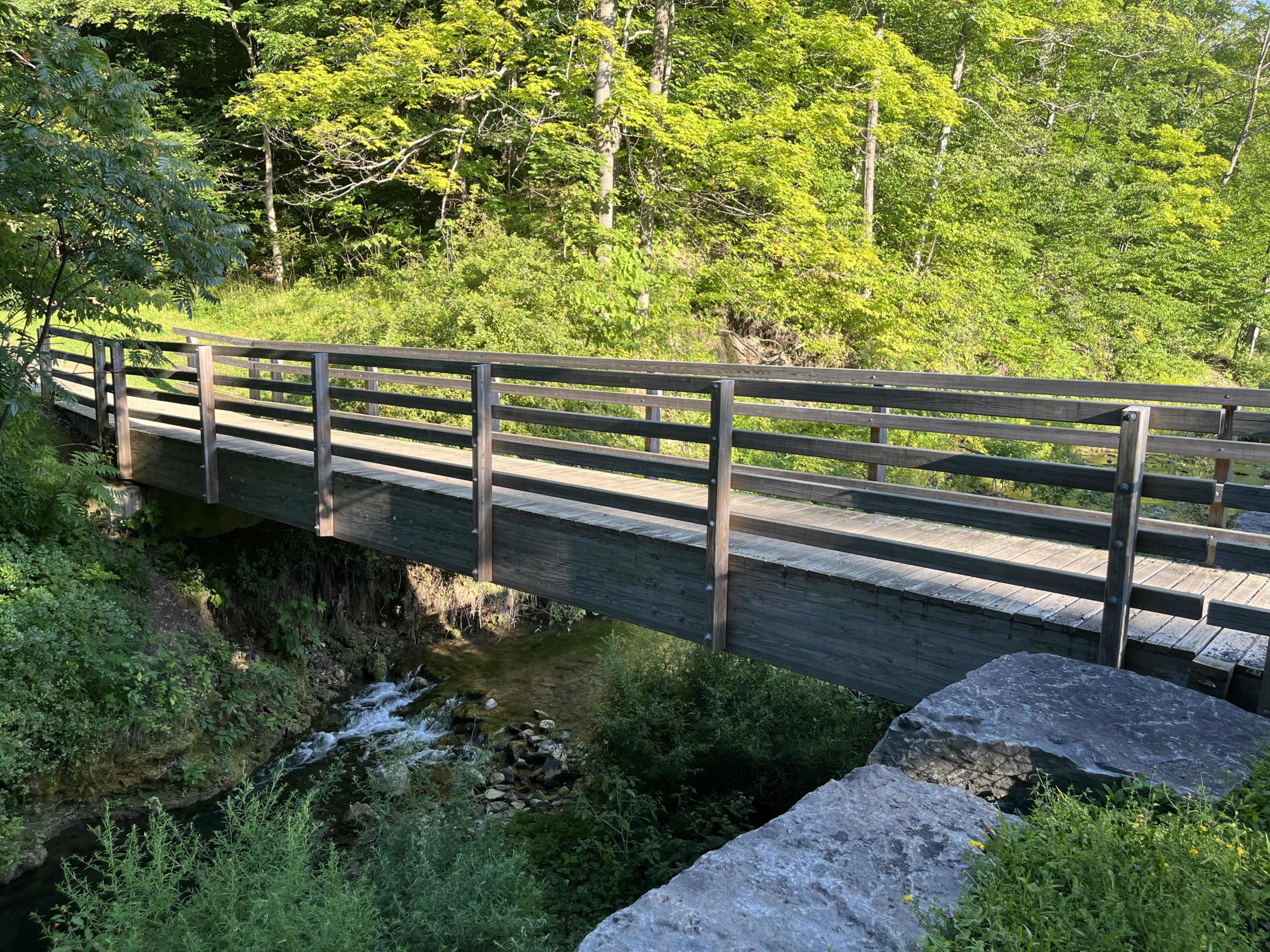Decarbonizing the Built Environment
Excerpts from an interview with Jim D’Aloisio on August 12, 2022
By Tona Rodriguez-Nikl

Jim D’Aloisio is a structural engineer dedicated to reducing greenhouse gas emissions from building materials and to the heat losses during building operation. In our conversation, Jim described the aha moment that started him down this path:
Wow! I’m designing concrete and steel buildings, tons of steel and concrete… and the revelation that hits a structural engineer at some point in their career: Portland cement has [such high carbon emissions]!? Until then I didn’t know; there was an aha moment. And there are practitioners that I know of, getting that aha moment just now.
“We can do a HUGE amount as structural engineers,” he says, if we acknowledge these impacts. And he’s right. Concrete accounts for about 5% and steel for about 7% of global carbon emissions.
For Jim, the elephant in the room, is the practice of demolishing an old building and in its place putting up a “big, dumb building” that’s “just a little bit better.” Instead, Jim argues that we need to respect the “carbon burden” that has already been paid and find ways to repair and repurpose the existing building. This question will only become more acute as the building stock grows and ages. There are a lot of factors involved in whether or how to preserve a building, but “it’s hardly ever the structural adequacy; we can overcome the structural limitations.” Rehabilitating buildings depends on their value to the history and culture of the community and the building’s place in the urban or rural setting. “In many cases it requires just as much design effort” to rehabilitate a building, but for Jim it is worth it if the result is just as good but with a much lower carbon burden. In fact, he says, “to me it’s more fun to assess and rehabilitate and modify existing buildings than it is to design [a cookie cutter new building].”

Jim’s work points to a broadening of what it means to be an engineer. “I’m a structural engineer, not a social sciences major,” he says, “but the more I get involved in this kind of thing the more I think that maybe we are all involved in the social sciences.” For Jim, engineers should also be advocates. “We’re team members and we’ve got something to say. Maybe what brings us to the table is to talk about what we can take advantage of with the carbon burden that has already been paid. We can be people having that conversation, along with the rest of the team.”
Jim sees promising changes in the engineers arriving in the field. “In general, the younger engineers are more open to doing something about carbon awareness. When I was in my 20s or 30s I wasn’t carbon aware at all; nobody, really. Now most structural engineers, I think, are at least aware of the topic by the time they graduate.” He continued, “I’m very enthused [to have] a whole lot of new brains looking into this problem” I asked Jim what he thought he needed most from young engineers. He said, “The willingness to question the way it’s always done,” to show initiative, to be open to new ideas, and “to question the premises of the more established engineers to see if you can bust through the egos. It may not be that every firm would be open to that kind of thing, but I think that’s what we need, we need younger people with the guts to be able to question the status quo.”

Certainly, this kind of work isn’t easy, with barriers such as lack of code compliance, cost, and perceptions of safety and risk. According to Jim, in Europe 100% of balconies are properly detailed (“thermally broken”) while in the United States, this figure is only 3%. This is due both to better codes in Europe, which reflect the best understanding and the goals of the Kyoto Protocol, and worse compliance in the United States. In contrast, Jim figures that over 90% of buildings in the United States break the energy code. In Jim’s view, a major problem is lack of enforcement. Cost is another barrier. Even if an energy efficient building is cheaper in the long run, “it’s cheapest initial construction costs that carries the day” and energy-efficiency is often costlier up front. “There’s jobs that I don’t get because I’m perceived of as the engineer that has some other value, other than cheapest initial construction costs.” Another barrier that Jim identifies is a misperception among engineers that safety is the only primary consideration. Jim portrays the typical engineering attitude: doubling or tripling the size of a beam beyond what the code requires just to make it safer even if that larger beam exacerbates energy losses. But, Jim argues, the beam was already safe at its original size, and making it bigger ignores “a part of the code that you need to comply with as a professional engineer.” This kind of conservatism also exists in the contracting world. Jim shares a telling conversation with a general contractor:
The only thing that you have to do is be willing to accept the fact that it’s different than anything you’ve ever done before. And that scares people because construction is a very conservative profession, slow to change. A friend of mine, a general contractor, said, Jim, why would you want me to do this [new energy efficient approach]? ” I explained it and he said, “I love the concept. But I don’t want to do it for the first time on this project.” And I walked away. You know what I should have said? “Chicken.”
Despite these challenges, Jim’s determination and confidence permeated the conversation. Jim believes that change can happen suddenly and unexpectedly, so his advice is, “Push and push and push and expect to get pushed back, but expect also that, as you push you will make progress, not just for your own projects, but for the industry that you’re working in… The more we stir the pot, the more we communicate with each other, the more we share the stories and explore these ideas and get the word out, the better it is.” Jim’s positivity comes out in his long-term vision of his profession when he talks about the SE 2050 Challenge to reduce carbon emissions in buildings substantively. “As in any major endeavor you take one step at a time. There’s so much low hanging fruit, you know you can cut down the carbon emissions of your building by 50% using off the shelf technology without any additional construction costs today.” But in the future? “What are they going to do in 20 or 30 years when they get close to 2050 to get down to zero [emissions]? I don’t know. Nobody does, but we can move forward in that direction.” This determination to work steadily towards an important goal, while not knowing how he’ll take the final steps is an attitude worth replicating.
For your consideration:
How can you better support repair and rehabilitation of the objects that you use in your daily life? Do you share Jim’s determined attitude of working towards a goal despite not seeing the endpoint? Why or why not?